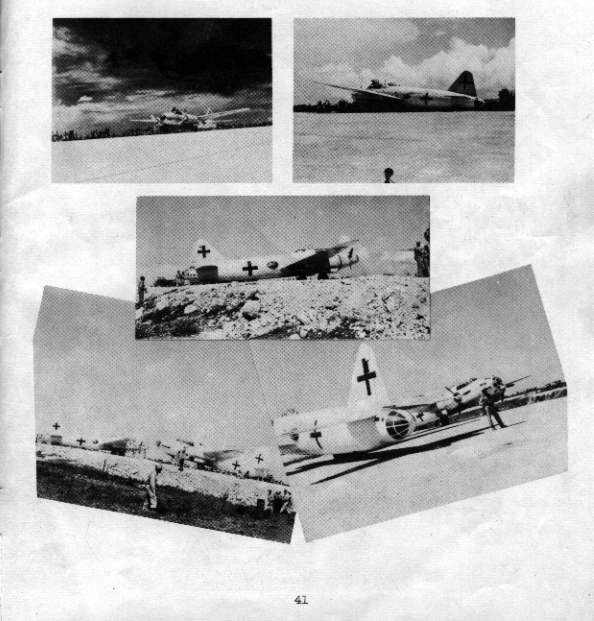 |
|
|
The 34th Fighter Squadron Yearbook Page 42.
| WW1 Aircraft | WW2 Fighters | Jet Fighters | Ships | Tanks | Guitars |
 |
|
Soldiers stand at attention as the Japanese Betty Bombers taxi by." src="Wayne_Bossert_photo1.JPG" width="500" height="359" class="style1"> Soldiers stand at Attention when the Japanese Betty Bombers Taxi In. Activity of soldiers near the WW2 Betty Bombers on Ie Shima" src="Wayne_Bossert_photo2.jpg" width="500" height="377" class="style1"> The Heavy activity around the Japanese Betty Bomber Aircraft in WW2 The 77th Infantry Division, Wayne Bossert" src="Wayne_Bossert_photo3.jpg" width="500" height="335" class="style1"> Wayne Bossert, The 77th Infantry Division, Memory of Ernie Pyle April 1945 |
|
|
|
|
Go to the Yellow
Airplane Online Museum
| When Emperor Hirohito decided for the Japanese to surrender after the dropping of the Atomic Bombs on Hiroshima and Nagasaki, he was not a popular man. The Japanese honor dictated that the Japanese should fight to the very last person and never give up. Hirohito knew that the people have suffered badly and that most everyone would die if the war continued and he saw fit to end the war and end this great suffering. The Japanese generals in charge of the armies thought differently than this. They wanted to continue the war to the very end, to the very last man, for the honor of Japan. |
Click Here for the Japanese Propaganda Art Exhibit
| In these rare photos, you can see the Japanese surrender delegation standing next to their Betty Bombers and then standing next to one of the American planes. One of the Betty Bombers ran off of the runway and was damaged. Some people think that they intentionally ran the plane off of the runway so they wouldn't have to fly it back to Japan and take the chance of getting shot down by their own pilots. There has not been any movies that I could find that had any pictures or the story of these Japanese pilots or this pre surrender ceremonies. However, these Japanese soldiers had a tremendously hard time making it back to Japan because the Japanese generals had ordered their fighter pilots to shoot down any of these planes bringing the surrender plans to the Americans and back to Japan. This is the real surrender story. |
Click Here for the Asahigraph Magazine Exhibit
| The original press release lists the following names: 1.) Lieutenant General Kawabe Takashiro Vice Chief, Imperial Staff 2.) Rear Admiral Ichiro Yokuyama Representative, Imperial Japanese Navy Staff 3.) Colonel Yashima Terai General Staff 4.) Colonel Orato Yamoto General Staff 5.) Mr. Morio Yackawa Secretary, Japanese foreign office
Research from Jonathan Butler |
|
|
Look at these exhibits and tell me what these men really fought for.
the 34th fighter Squadron
USS Kitty Hawk
About the Webmaster, Why God Send Me to the North Pole
/34th/34th_PG42.html|11453"
| . |